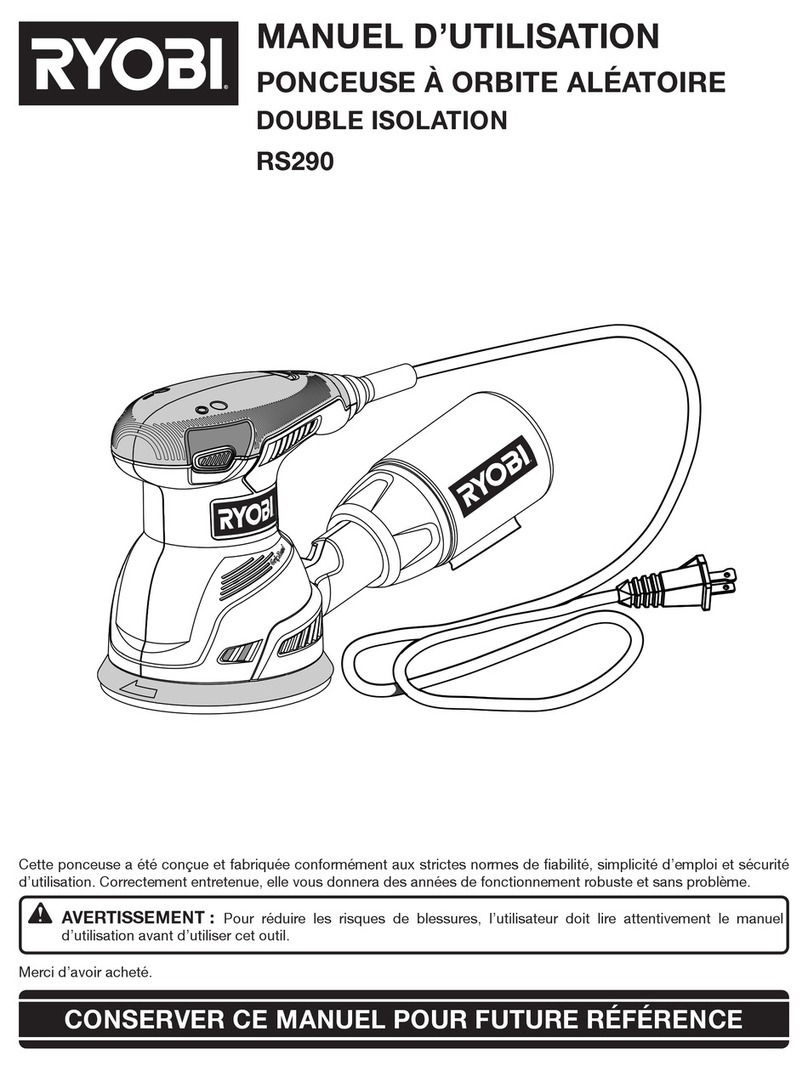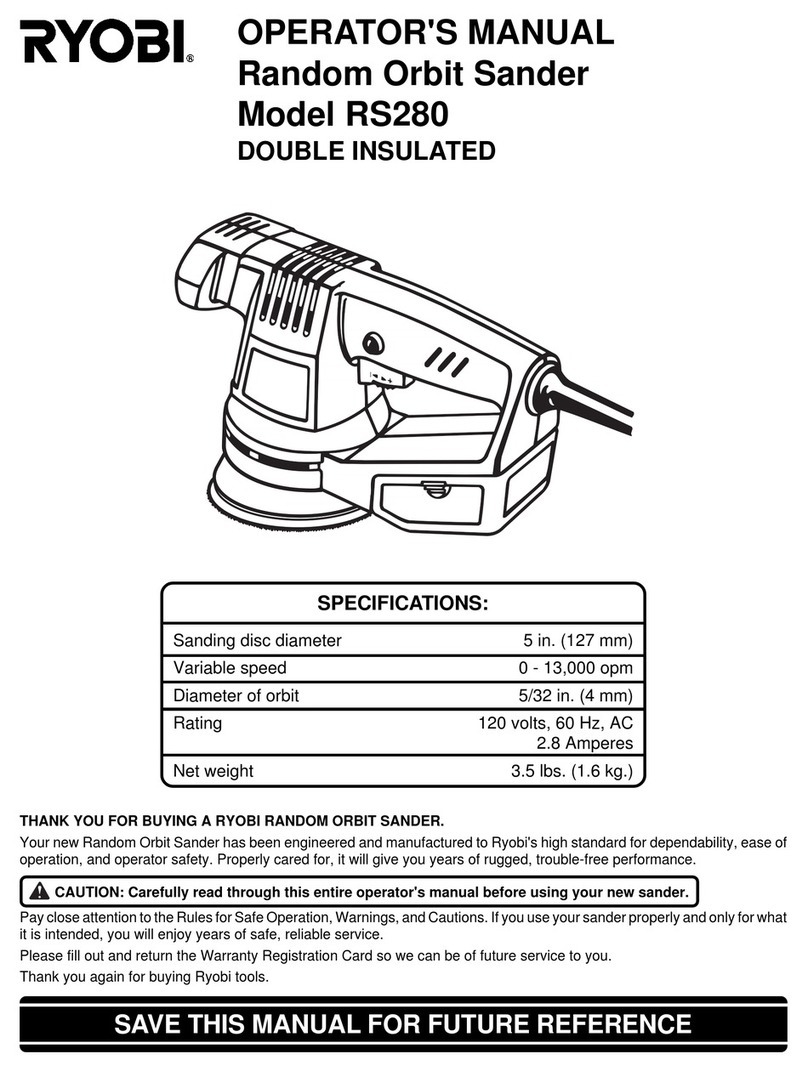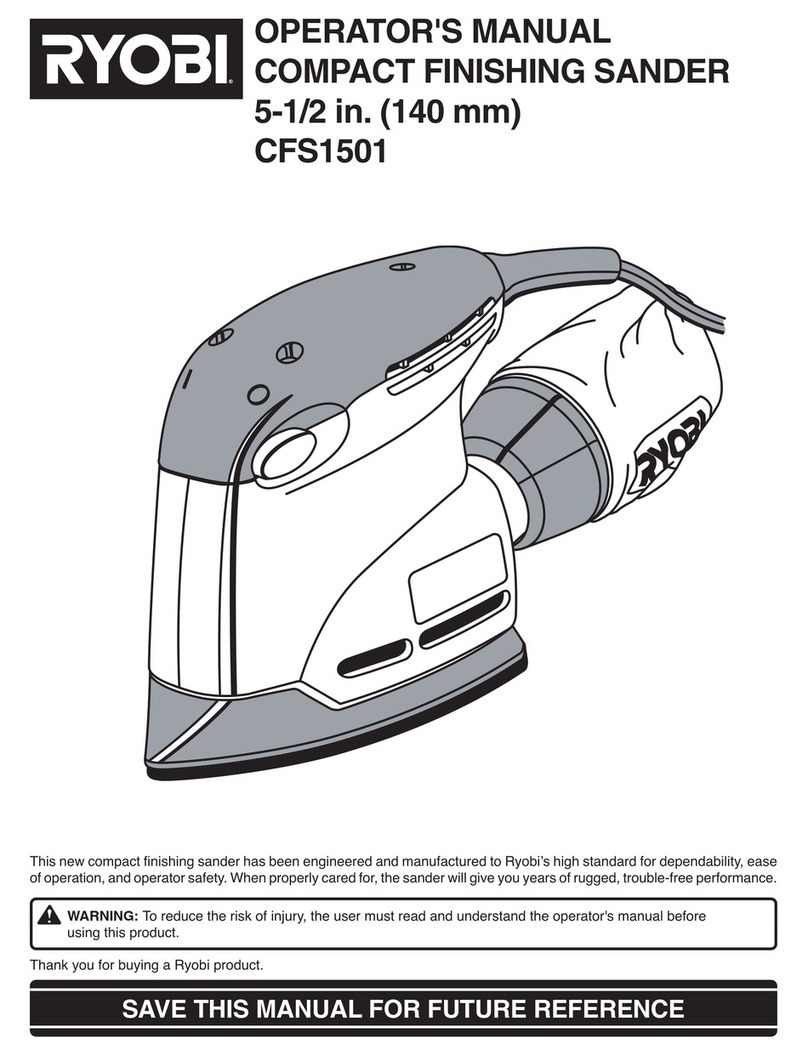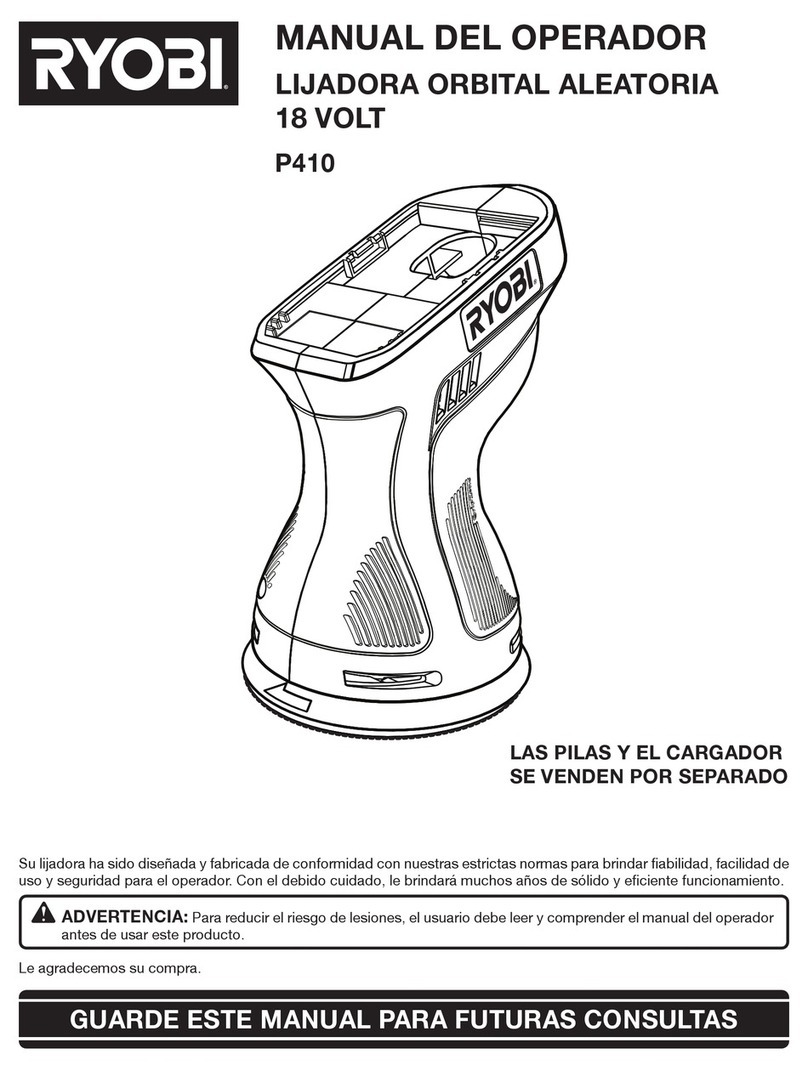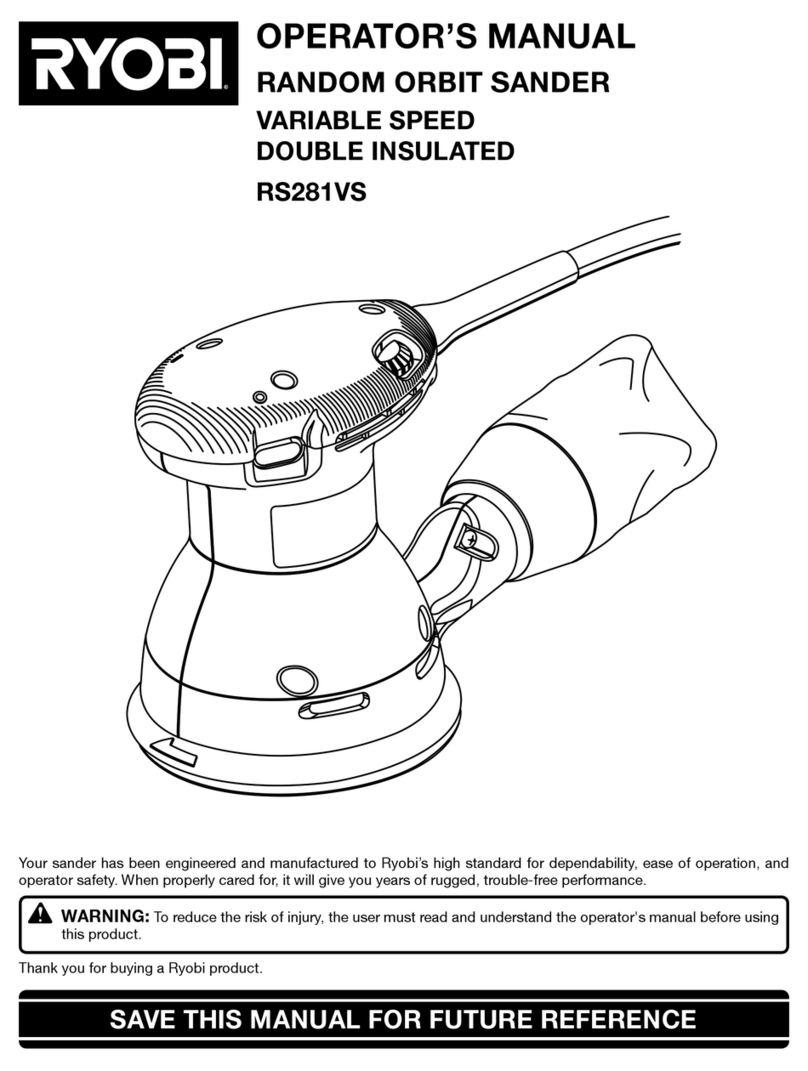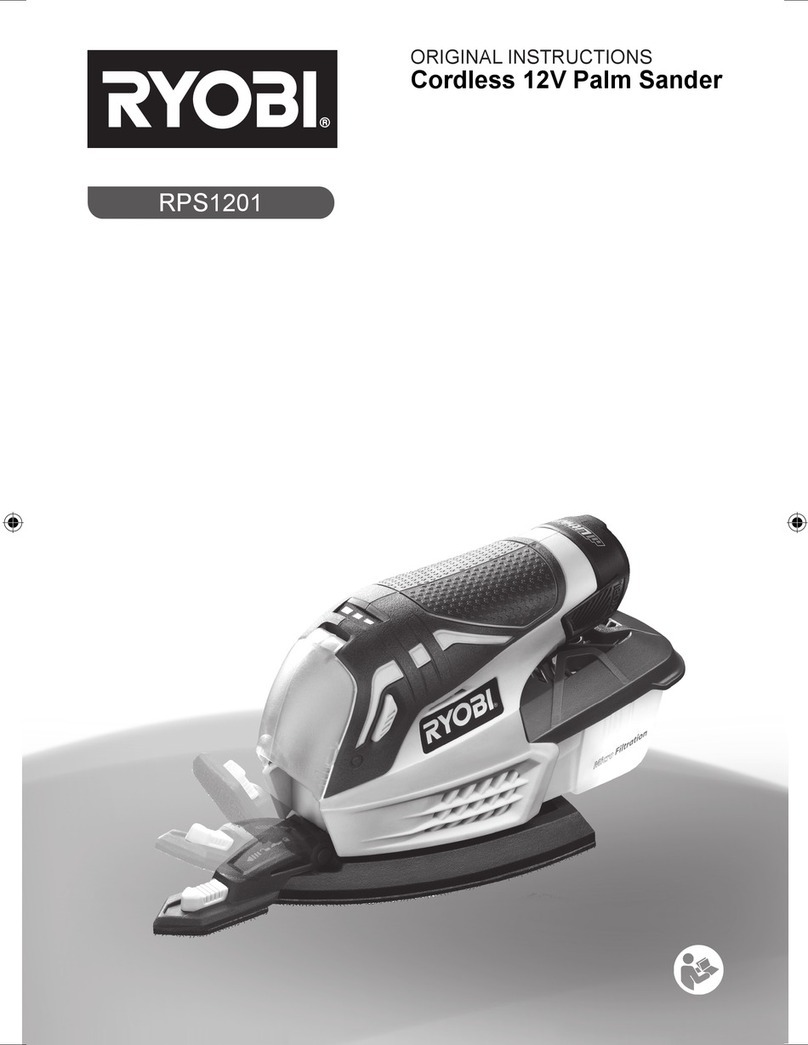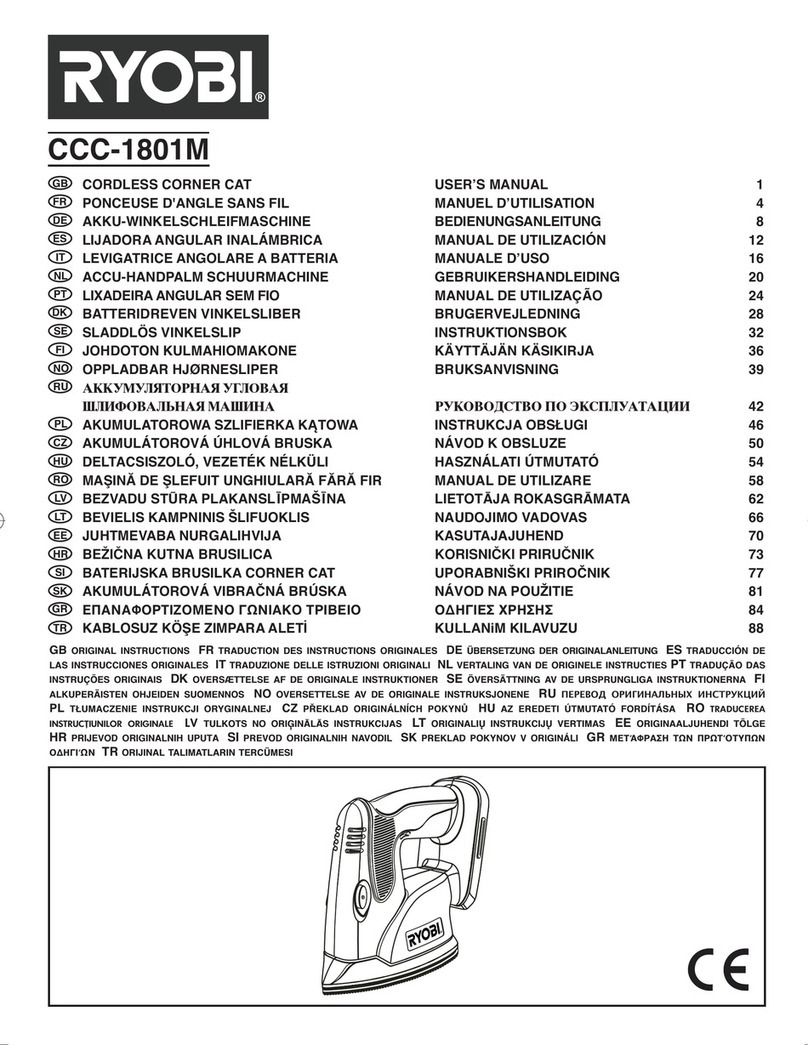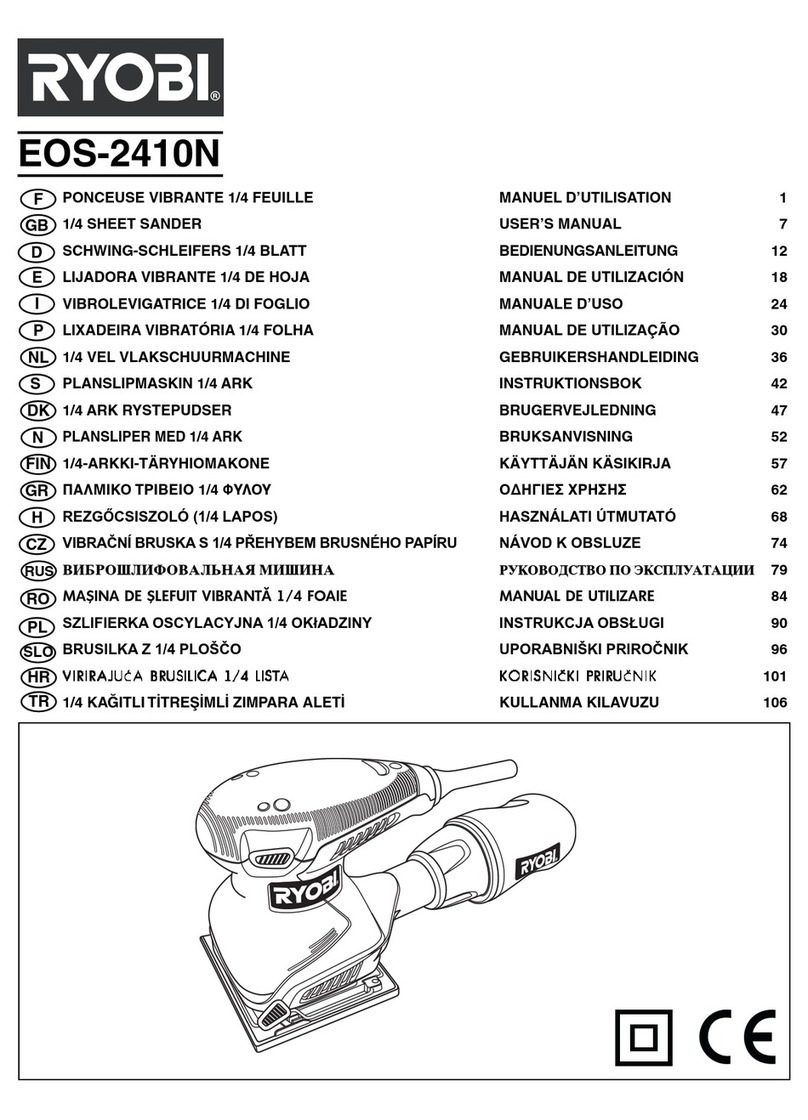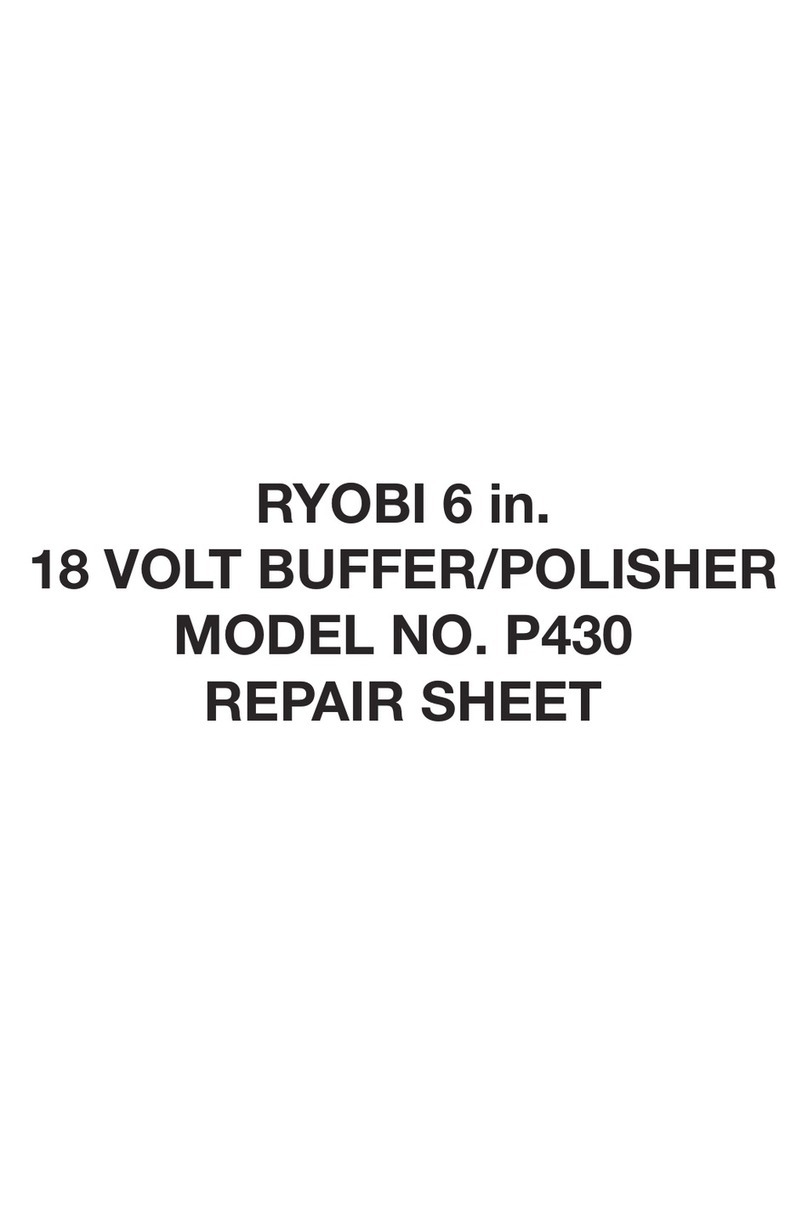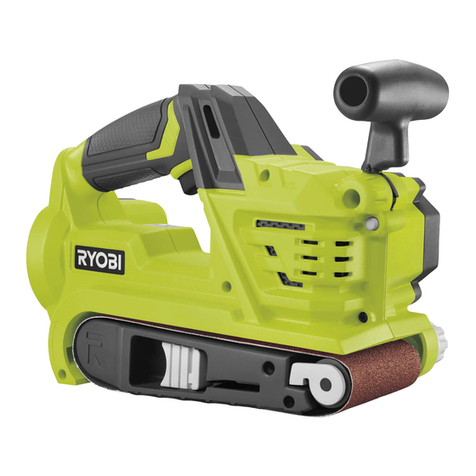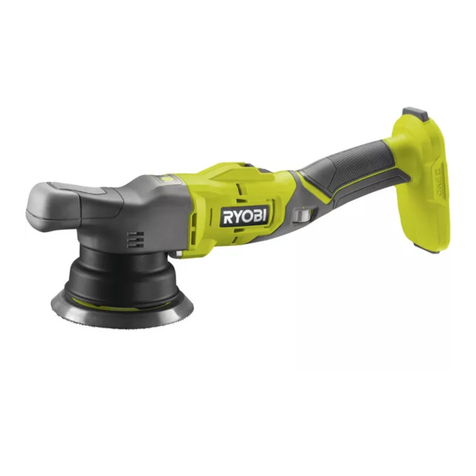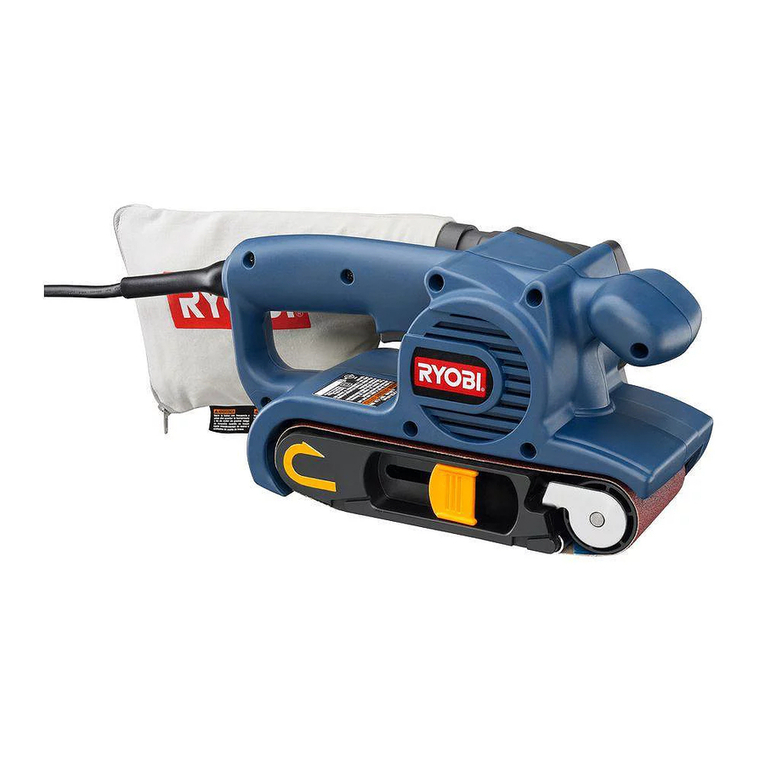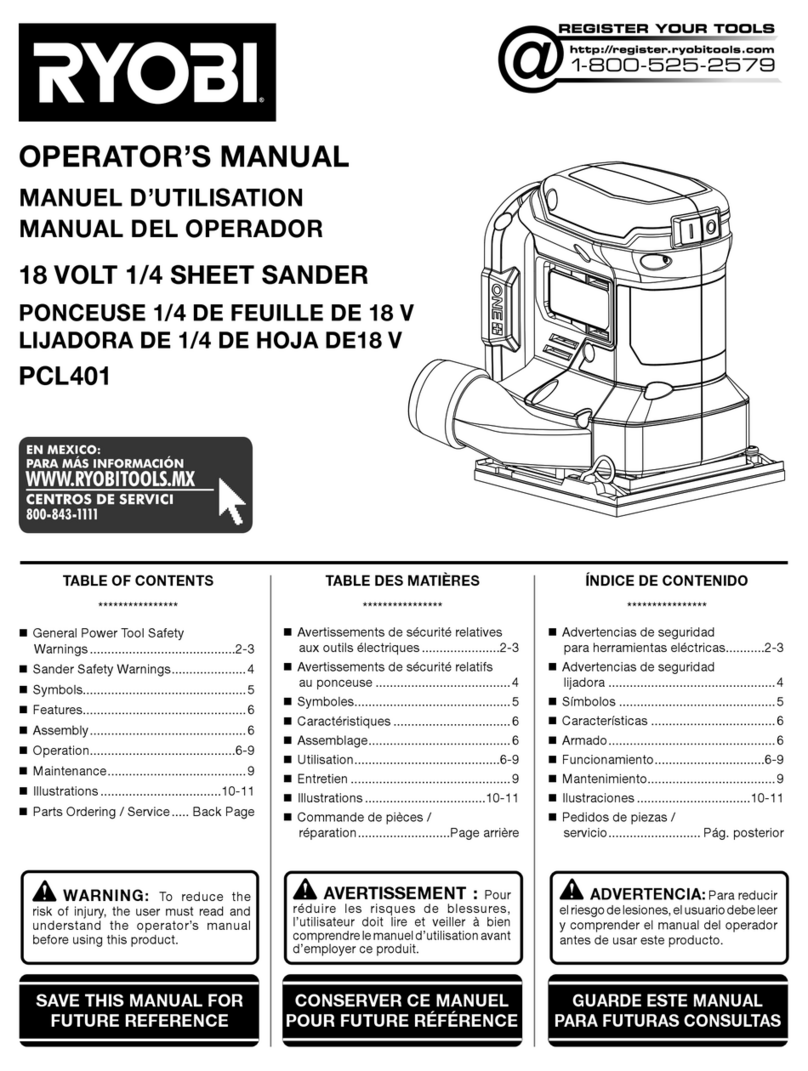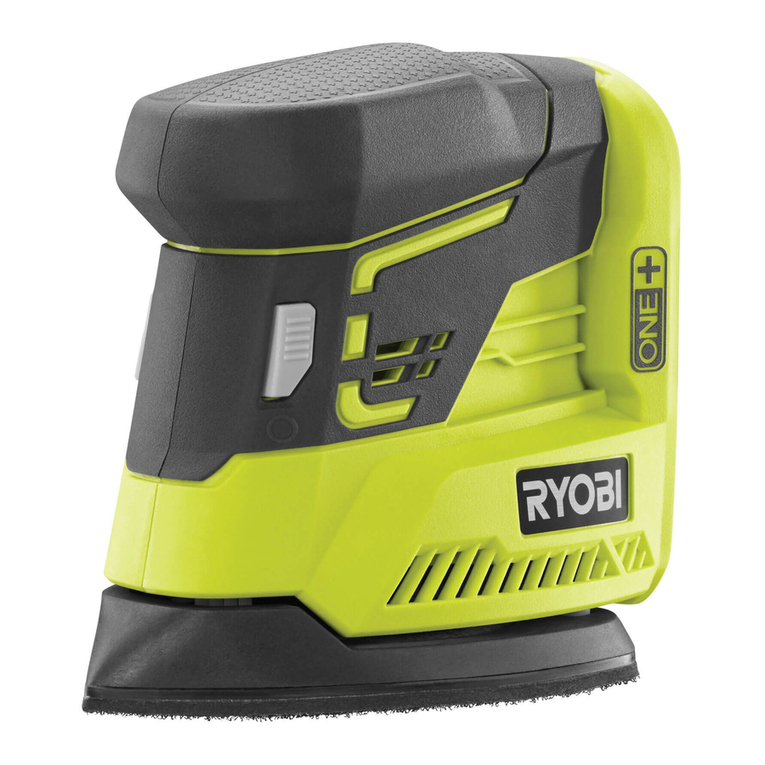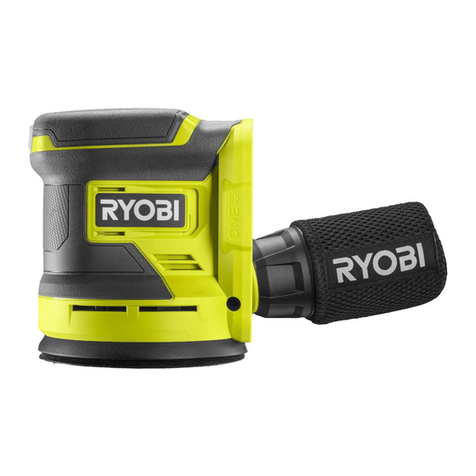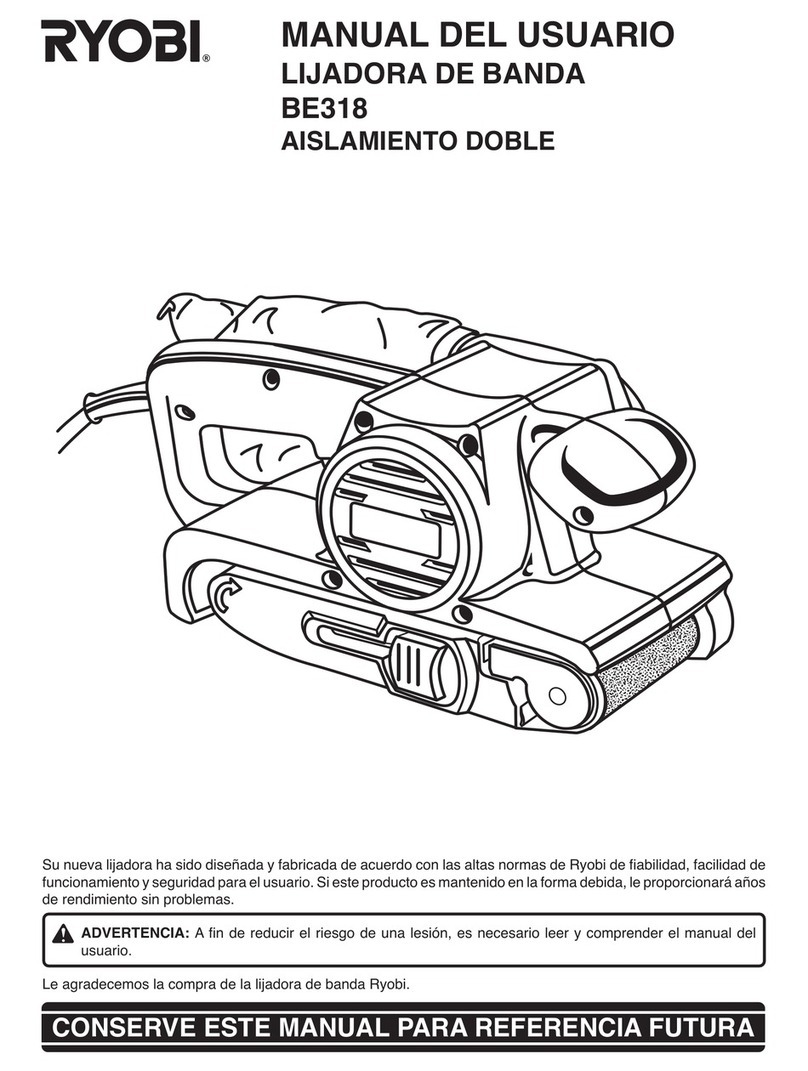
1
GENERAL SAFETY RULES
■For multiple hazards, read and understand the safety
instructions before installing, operating, repairing,
maintaining, changing accessories on, or working near
the sander or polisher. Failure to do so can result in
serious bodily injury.
■Only qualified and trained operators should install,
adjust or use the sander or polisher.
■Do not modify this sander or polisher. Modifications
can reduce the effectiveness of safety measures and
increase the risks to the operator.
■Do not discard the safety instructions; give them to the
operator.
■Do not use a sander or polisher if the tool has been
damaged.
■Tools shall be inspected periodically to verify that the
ratings and markings required by this part of ISO 11148
are legibly marked on the tool. The employer/user
shall contact the manufacturer to obtain replacement
marking labels when necessary.
PROJECTILE HAZARDS
■Be aware that failure of the work piece or accessories
or even of the inserted tool itself can generate high-
velocity projectiles.
■Always wear impact-resistant eye protection during
operation of the sander or polisher. The grade of
protection required should be assessed for each use.
■For overhead work, wear a safety helmet.
■The risks to others should also be assessed at this
time.
■Ensure that the work piece is securely fixed.
ENTANGLEMENT HAZARDS
■Choking, scalping and/or lacerations can occur if loose
clothing, personal jewelry, neck wear, hair or gloves
are not kept away from the tool and its accessories.
OPERATING HAZARDS
■Use of the tool can expose the operator's hands to
hazards, including cuts and abrasions and heat. Wear
suitable gloves to protect hands.
■Operators and maintenance personnel shall be
physically able to handle the bulk, weight and power
of the tool.
■Hold the tool correctly; be ready to counteract normal
or sudden movements and have both hands available.
■Maintain a balanced body position and secure footing.
■Release the start-and-stop device in the case of an
interruption of the energy supply.
■Use only lubricants recommended by the manufacturer.
■Personal protective safety glasses shall be
used; suitable gloves and protective clothing are
recommended.
■Inspect the backing pad before each use. Do not use if
cracked or broken or if it has been dropped.
■Avoid direct contact with the moving sanding pad in
order to prevent pinching or cutting of hands or other
body parts. Wear suitable gloves to protect hands.
■Never run the tool unless abrasive is applied to the
work piece.
■There is a risk of electrostatic discharge if used on
plastic and other non-conductive materials.
■Potentially explosive atmospheres can be caused by
dust and fumes resulting from sanding or grinding.
Always use dust extraction or suppression systems
which are suitable for the material being processed.
REPETITIVE MOTIONS HAZARDS
■When using a sander or polisher to perform work-
related activities, the operator can experience
discomfort in the hands, arms, shoulders, neck or
other parts of the body.
■While using a sander or polisher, the operator should
adopt a comfortable posture whilst maintaining secure
footing and avoiding awkward or off-balance postures.
The operator should change posture during extended
tasks; this can help avoid discomfort and fatigue.
■If the operator experiences symptoms such as
persistent or recurring discomfort, pain, throbbing,
aching tingling, numbness, burning sensations or
stiffness, these warning signs should not be ignored.
The operator should tell the employer and consult a
qualified health professional.
ACCESSORY HAZARDS
■Disconnect the sander or polisher from the energy
supply before fitting or changing the inserted tool or
accessory.
■Avoid direct contact with the inserted tool during and
after use, as it can be hot or sharp.
■Use only sizes and types of accessories and
consumables that are recommended by the
manufacturer of sanders or polishers; do not use other
types or sizes of accessories or consumables.
■Grinding wheels and cutting-off tools shall not be used.
■Check that the maximum operating speed of the
inserted tool (flap wheels, abrasive belts, fiber discs,
backing pads, etc.), is higher than the rated speed of
the sander or polisher.
■Self-fixing sander discs shall be placed concentrically
on the supporting pad.
WORKPLACE HAZARDS
■Slips, trips and falls are major causes of workplace
injury. Be aware of slippery surfaces caused by use of
the tool and also of trip hazards caused by the air line
or hydraulic hose.
